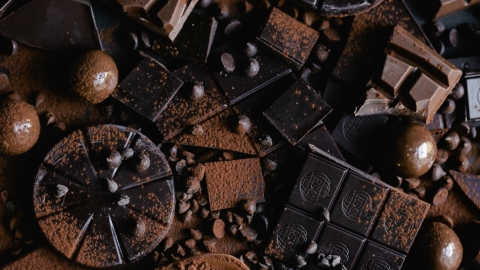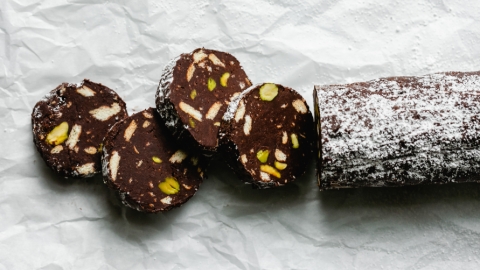The Unstable Seed of Food Heritage
As a “Franco-Hoosier” (a first-generation immigrant from France who acquired her American citizenship in Indiana), I see heritage food as an invaluable yet unstable seed. I do have a green thumb for French cuisine, and I am lucky to have inherited a culinary tradition that is well-established and valued. However, I have come to question what “heritage” cooking means and to whom.
What I have learned about heritage food comes less from French chefs and family members than from visionary Indigenous chefs, farmers and thinkers from Turtle Island and Aotearoa, New Zealand.
In my idealist mind, heritage food is sustainably grown, accessible to all and the ABCs of its cuisine are highly nutritious. Heritage food is genealogy and storytelling. It is reconciliation. It is sovereignty. It sustains the communities—past and present—who have nurtured the ingredients we choose to purchase. In this respect, heritage culinary traditions and food—especially stemming from marginalized populations—must be protected from cultural appropriation for commercial gain.
How did I arrive at these conclusions? My mother, Geneviève Magnan, my upbringing in the South of France and my research have something to do with it.
Because Geneviève was a full-time school principal and teacher, she requested my siblings and I give her some space when she started cooking after a long day. We obliged. She shared her recipes with us at the table to satisfy our curiosity when it was voiced. Still, the practical principles she instilled in us boiled down to this: “No one should expect you to cook as women, but you may want to know what’s on your plate. Your physical and emotional well-being depend on it, and you may want to budget for what you eat, because your financial health rests on it too. Nurture an inquisitive palate, experiment and share. Now, step out of my kitchen, my darlings, will you?”
In the rural village where I was raised, biking to school taught any curious kid who grew what and when. Simone, the lunch lady in our elementary school, single-handedly cooked almost every meal from scratch. Even though her salad dressing was often too oily, we knew to give her a forced smile for fear of offending her. Food wore the faces of those who grew it and served it to us. And yet for all that, we stayed indoors when the farmers sprayed heavily with pesticide the crops that surrounded our homes. We cursed the traditional candied fruit factory that was largely responsible for our meager local river, le Calavon, being labeled one of the most polluted rivers in France in the early 1980s.
Heritage food danced awkwardly with economic imperatives, and there was something unsettling about this. One of my friends tells me that in recent years, seasonal folkloric festivities in the South of France have opted for roasted pork instead of the traditional roasted mutton in some villages where the Muslim population has increased. Paradoxically, one may wonder: Is heritage food always sustainably produced and inclusive?
More recently, I came to rethink the notion of heritage food through food sovereignty, an international food justice movement that calls for a radical shift in our food system, including food production and consumption. More specifically, I chose to rethink my own food heritage and what I wish to pass down to my daughter by exploring the visionary stance of Indigenous chefs, growers and thinkers such as Chef Sean Sherman (The Sioux Chef’s Indigenous Kitchen), Chef Monique Fiso (HIAKAI: Modern Māori Cuisine), Dr. Jessica Hutchings (Te Mahi Māra Hua Parakore: A Māori Food Sovereignty Handbook) and African-American Jewish culinary historian Michael W. Twitty (The Cooking Gene, Kosher Soul and Rice).
Their teachings and practices are far too rich to detail here. Sherman, Fiso and Hutchings provide access to pre-colonial Indigenous food and knowledge by tracing them back into culinary history. In a similar fashion, Twitty uncovers African and African-American foodways. Collectively, they aim to rectify historical and structural injustices. Chefs Sherman and Fiso revitalize Indigenous foodways, which, in turn, impact the physical and mental health of the communities they cater to, expand their knowledge and provide business opportunities. In this world, where chefs have risen to the status of celebrities, Sherman and Fiso have become spokespersons who debunk the notion of an ego-driven, technique-oriented cuisine to propose instead an ideologically immersed kitchen that thrives with the community and supply chain around whom and for whom it was built to sustain.
While I know where I stand intellectually on food heritage, the practical applications of this knowledge in our home are still messy and very much a work in progress. We are a multi-ethnic family who came together through adoption, so heritage for us has partially been passed down, but it has also been suppressed and will most likely be researched, traced back and braided together with other cultural strands. It will take a village.
What is certain is that the next generation is hungry, and she has been comfortable taking over the kitchen lately. At times, my daughter announces at the grocery store that she is cooking dinner. I watch her 8-year-old, confident body meander through the aisles with her own cart and wash her ingredients with energetic purpose once we are back home.
As she chops and mixes ingredients I have never seen partying together before, she tells me, “I’m a wild chef. I cook off-menu. I make up my own dishes. This one is called ‘question soup!’” “An excellent name for a surprise soup!” I remark as her sous-chef. A most appropriate name for the unstable seed of heritage food blossoming in our home.
Anne C. Magnan-Park is a literary and film translator who teaches the literatures of the Pacific at Indiana University South Bend. Her motto: Eat local, read global.






